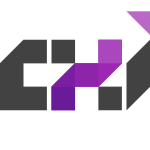14 papers:
 CHI-2015-IonWB #physics
CHI-2015-IonWB #physics- Skin Drag Displays: Dragging a Physical Tactor across the User’s Skin Produces a Stronger Tactile Stimulus than Vibrotactile (AI, EJW, PB), pp. 2501–2504.
 CHI-2014-SpindlerSMD #mobile
CHI-2014-SpindlerSMD #mobile- Pinch-drag-flick vs. spatial input: rethinking zoom & pan on mobile displays (MS, MS, MM, RD), pp. 1113–1122.
 ICSE-2013-LeeCJ #performance #program transformation #refactoring
ICSE-2013-LeeCJ #performance #program transformation #refactoring- Drag-and-drop refactoring: intuitive and efficient program transformation (YYL, NC, REJ), pp. 23–32.
 CHI-2012-KarrerWB #named #navigation #video
CHI-2012-KarrerWB #named #navigation #video- DragLocks: handling temporal ambiguities in direct manipulation video navigation (TK, MW, JOB), pp. 623–626.
 CHI-2011-DijkstraPV #flexibility #performance
CHI-2011-DijkstraPV #flexibility #performance- Evaluating effects of structural holds on pointing and dragging performance with flexible displays (RD, CP, RV), pp. 1293–1302.
 CHI-2011-YeeDYN
CHI-2011-YeeDYN- Do men heal more when in drag?: conflicting identity cues between user and avatar (NY, ND, MY, LN), pp. 773–776.
 HCI-UA-2011-VellaVR #people
HCI-UA-2011-VellaVR #people- Investigating Drag and Drop Techniques for Older People with Cognitive Impairment (FV, NV, PR), pp. 530–538.
 CHI-2007-GuiardDC #documentation #evaluation #navigation
CHI-2007-GuiardDC #documentation #evaluation #navigation- Quantifying degree of goal directedness in document navigation: application to the evaluation of the perspective-drag technique (YG, YD, OC), pp. 327–336.
 ITiCSE-2006-Bergin #editing
ITiCSE-2006-Bergin #editing- Karel universe drag & drop editor (JB), p. 307.
 ICFP-1996-RojemoR #compilation #profiling #revisited
ICFP-1996-RojemoR #compilation #profiling #revisited- Lag, Drag, Void and Use — Heap Profiling and Space-Efficient Compilation Revisited (NR, CR), pp. 34–41.
 CSEE-1995-Gorski #approach #education #re-engineering
CSEE-1995-Gorski #approach #education #re-engineering- Software Engineering Education: A Dragging-Through Approach (JG), pp. 31–44.
 CHI-1995-WagnerCO
CHI-1995-WagnerCO- Drag Me, Drop Me, Treat Me Like an Object (AW, PC, RO), pp. 525–530.
 CHI-1991-MacKenzieSB #comparison
CHI-1991-MacKenzieSB #comparison- A comparison of input devices in element pointing and dragging tasks (ISM, AS, WB), pp. 161–166.
 CHI-1990-GillanHARM #how #question
CHI-1990-GillanHARM #how #question- How does Fitts’ law fit pointing and dragging? (DJG, KLH, SA, MR, LM), pp. 227–234.
 CHI-2015-IonWB #physics
CHI-2015-IonWB #physics CHI-2014-SpindlerSMD #mobile
CHI-2014-SpindlerSMD #mobile ICSE-2013-LeeCJ #performance #program transformation #refactoring
ICSE-2013-LeeCJ #performance #program transformation #refactoring CHI-2012-KarrerWB #named #navigation #video
CHI-2012-KarrerWB #named #navigation #video CHI-2011-DijkstraPV #flexibility #performance
CHI-2011-DijkstraPV #flexibility #performance CHI-2011-YeeDYN
CHI-2011-YeeDYN HCI-UA-2011-VellaVR #people
HCI-UA-2011-VellaVR #people CHI-2007-GuiardDC #documentation #evaluation #navigation
CHI-2007-GuiardDC #documentation #evaluation #navigation ITiCSE-2006-Bergin #editing
ITiCSE-2006-Bergin #editing ICFP-1996-RojemoR #compilation #profiling #revisited
ICFP-1996-RojemoR #compilation #profiling #revisited CSEE-1995-Gorski #approach #education #re-engineering
CSEE-1995-Gorski #approach #education #re-engineering CHI-1995-WagnerCO
CHI-1995-WagnerCO CHI-1991-MacKenzieSB #comparison
CHI-1991-MacKenzieSB #comparison CHI-1990-GillanHARM #how #question
CHI-1990-GillanHARM #how #question









